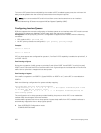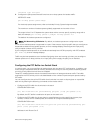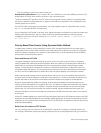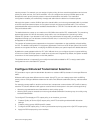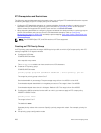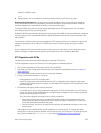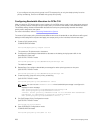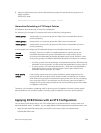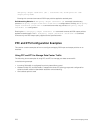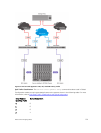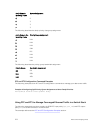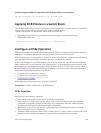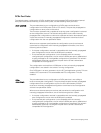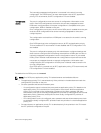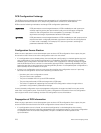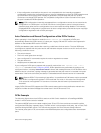dcb-policy output stack-unit {all | stack-unit-id} stack-ports all dcb-
output-policy-name
Entering this command removes all DCB input policies applied to stacked ports.
Dell Networking Behavior: A dcb-policy output stack-unit all command overwrites any
previous dcb-policy output stack-unit stack-unit-id configurations. Similarly, a dcb-policy
output stack-unit
stack-unit-id command overwrites any previous dcb-policy output
stack-unit all configuration.
Entering the no dcb-policy output stack-unit all command removes all DCB output policies
applied to stacked ports. The no dcb-policy output stack-unit stack-unit-id command
removes only the DCB output policy applied to the specified switch.
PFC and ETS Configuration Examples
This section contains examples of how to configure and apply DCB input and output policies on an
interface.
Using PFC and ETS to Manage Data Center Traffic
The following shows examples of using PFC and ETS to manage your data center traffic.
In the following example:
• Incoming SAN traffic is configured for priority-based flow control.
• Outbound LAN, IPC, and SAN traffic is mapped into three ETS priority groups and configured for
enhanced traffic selection (bandwidth allocation and scheduling).
• One lossless queue is used.
270
Data Center Bridging (DCB)



